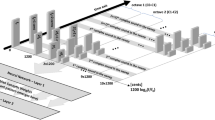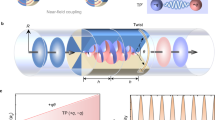Abstract
IT is a well known fact that no musical sound is produced alone, but the instant it is sounded a series of other sounds springs from it, and always in a certain order and ratio. Next to the primary tone, the octave is heard, then the octave fifth, the double octave, the double octave third, the double octave fifth, the extra flat double octave seventh, the treble octave, and so on. The origin of these “partials” has long been an interesting study, and a solution has occurred to me which I think is the true one.
This is a preview of subscription content, access via your institution
Access options
Subscribe to this journal
Receive 51 print issues and online access
$199.00 per year
only $3.90 per issue
Buy this article
- Purchase on SpringerLink
- Instant access to full article PDF
Prices may be subject to local taxes which are calculated during checkout
Similar content being viewed by others
Author information
Authors and Affiliations
Rights and permissions
About this article
Cite this article
JONES, W. “Partials”. Nature 29, 6–7 (1883). https://doi.org/10.1038/029006d0
Issue date:
DOI: https://doi.org/10.1038/029006d0



